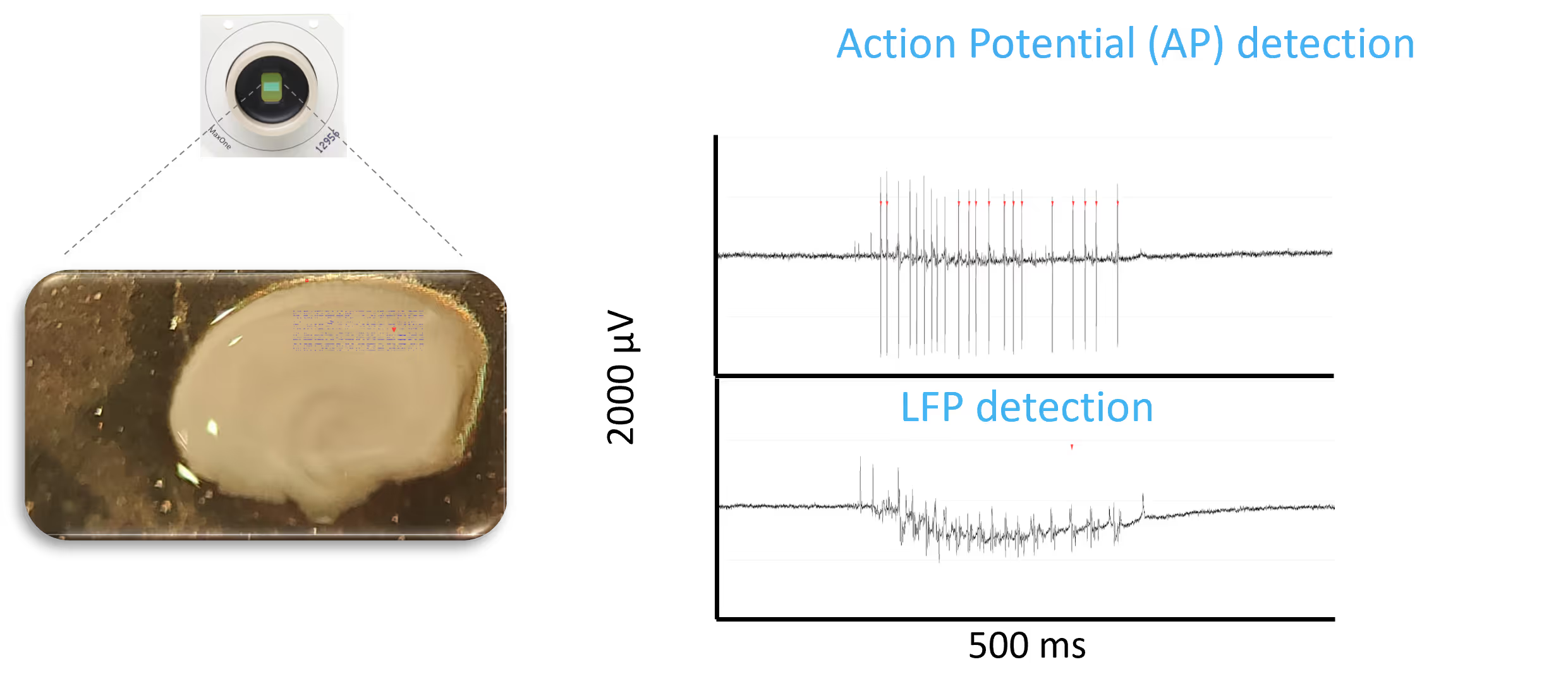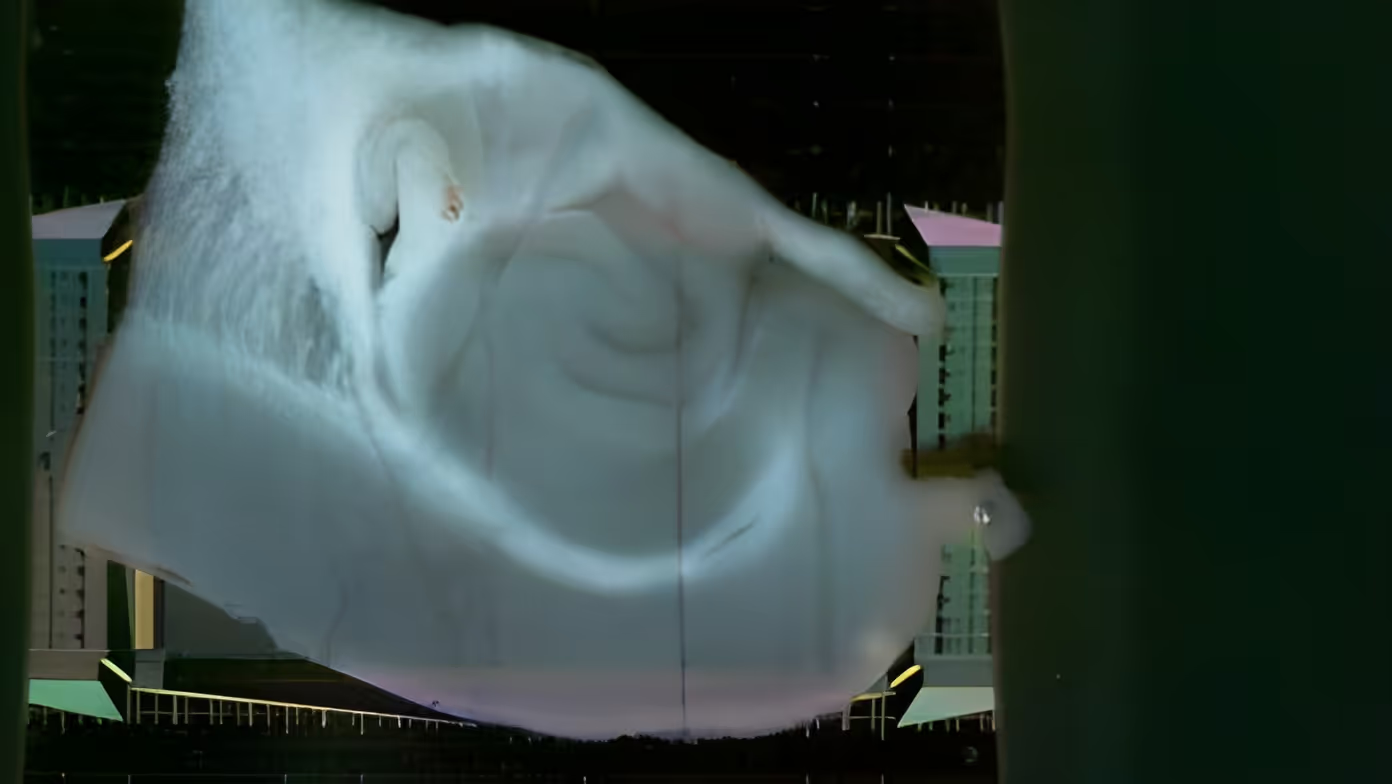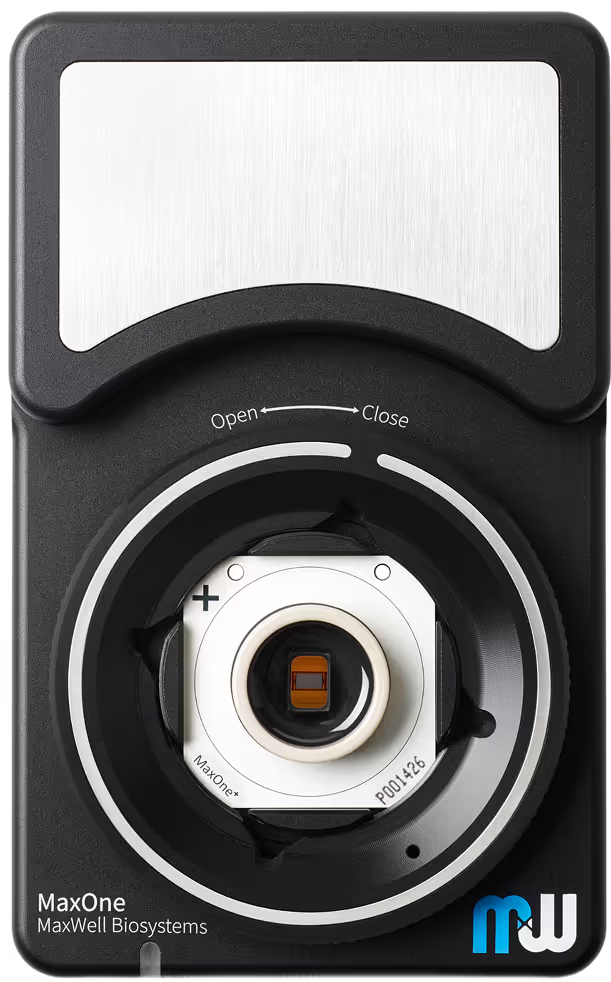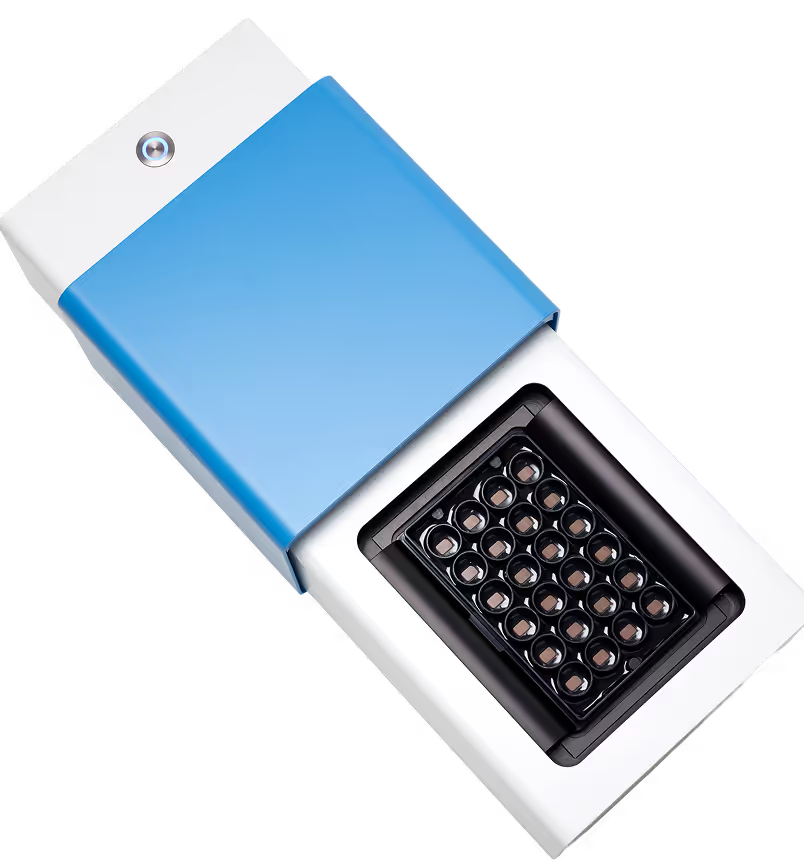
Brain Slices
Every Cell has a Story to Tell.
Let’s Discover Yours
Brain slices offer a powerful ex vivo model to study defined brain regions and circuits with physiological relevance and experimental control. While traditional techniques like imaging and patch-clamp provide valuable insights, they are limited in scale, speed, or resolution.
Our High-Density Microelectrode Array (HD-MEA) technology provides precise localization for recording and stimulation to dissect neuronal circuits across compartments, thanks to its high electrode density. Capture rich, reproducible data at subcellular, single-cell, and network levels, and across the whole range of brain oscillations. Identify subtle functional differences other systems might miss.

Uncover functional insight across your brain slice and all scales
Capture circuit dynamics across the entire brain slice, from single neurons’ spikes to the full range of brain oscillations, thanks to the signal quality and high spatial and temporal resolution of our HD-MEA technology.
Always on target, never miss an event
Dissect activity within and across brain regions using a streamlined setup, no complex rig needed. 26’400 electrodes let you precisely target specific areas, capturing key events and subtle functional differences. Record exactly where it matters every time.
Scale up your electrophysiology workflow
Run high-throughput slice experiments with our platform featuring the first-ever perfusion system optimized for the MaxTwo Multi-Well HD-MEA System, maintaining slice health and signal quality and fidelity across wells.
Probe target brain regions with precise stimulations
Activate defined circuits or test plasticity mechanisms using flexible stimulation paradigms, from basic pulses to complex, customizable protocols, delivered with precise spatial and temporal control.
Optimized light stimulation for your studies
Perform high-resolution optogenetics experiments with our HD-MEA technology, optimized to reduce optical artifacts.
.avif)
Functional characterization of brain slices
Perform high-resolution recordings from freshly prepared slices for acute recordings and organotypic brain slices for longitudinal recordings, thanks to the MaxOne Single-Well and MaxTwo Multi-Well HD-MEA Systems. With 26,400 flexibly controlled electrodes per well, precisely record from your region(s) of interest and capture action potentials as well as local field potentials (LFPs) and all brain oscillations.
Case studies
Multiscale recording for brain slices
Deep dive into the electrical activity of your brain slice sample across scales, and capture action potentials from single cells and LFPs at the same time with our technology. A freshly prepared brain slice containing the hippocampus is positioned on a MaxOne Chip, with corresponding simultaneous recordings of LFPs and single action potentials
Chemically induced epileptiform activity across multiple brain regions
Take full advantage of the large electrode array on our MaxOne Single-Well and MaxTwo Multi-Well HD-MEA System. Shown in the panel below, electrical events resembling epileptic states were observed in the hippocampus and cortex of a freshly prepared brain slice treated with 4-aminopyridine.
Relevant
Applications
Relevant Biological Models
Resources
Chronic silencing of Drd1a-Cre+ neurons impairs dopaminergic-driven cortical activation

Multimodal evaluation of network activity and optogenetic interventions in human hippocampal slices

Mutual generation in neuronal activity across the brain via deep neural approach, and its network interpretation

MaxOne Acute Brain Slice Protocol – Cerebellum
Capture high-density electrophysiology recordings from acute cerebellar brain slices with the MaxOne Tissue Holder and Perfusion System for stable, reproducible results.
MaxOne Acute Brain Slice Protocol
Capture high-density electrophysiology recordings from acute brain slices with the MaxOne Tissue Holder and Perfusion System for stable, reproducible results.
MaxTwo Perfusion System Brochure
Introducing the first fully integrated multiwell MEA perfusion system, MaxTwo Perfusion system ensures continuous medium flow and high-resolution data for advanced cell research.




.avif)


